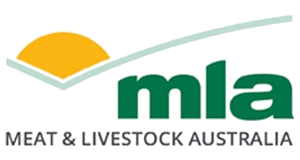Less Mites, More Feed: Improving management of redlegged earth mites on pastures across Victoria
| Project start date: | 20 December 2022 |
| Project end date: | 30 July 2026 |
| Project status: | In progress |
| Livestock species: | Grass-fed Cattle, Sheep, Lamb |
| Relevant regions: | Southern Australia, Victoria |
| Site location: | Western & Northern Victoria: Mt Cole Creek, Wanalta, |
Summary
This producer demonstration site project aims to demonstrate that online decision-aid tools for RLEM management can help producers optimise pasture establishment and production in established pastures while reducing pasture production costs and unnecessary chemical use.
Producers involved in this project will be shown the latest tools and technology for managing pasture pests, with a focus on Red legged earth mite (RLEM). The tools are newly developed as a result from a research partnership between MLA, GRDC and Cesar Australia.
Objectives
By December 2025, in four pasture demonstration sites within two different growing regions of Victoria, engaging 15 core producers and 90 observer producers, the consultant will:
- Demonstrate to over 90 core and observer producers the use of readily available online decision-aid tools for best practice management of RLEM in a commercial setting across two (I and II) different growing regions and four (1-4) demonstration sites in Victoria (I.North Central and II.South Western). Note this is not research, but the extension of research findings from an ongoing GRDC/MLA co-investment.
- Evaluate the success of the decision-aid tools in reducing the density of RLEM, as well as potentially increasing the diversity and abundance of beneficial insect and mite species, as measured by Cesar Australia on site monitoring days during the Autumn to Winter growing season at each demonstration site.
- Demonstrate and increase the skills of 100% of the core producers and 75% of the observer producers in the data collection and recording of pasture insect species and herbage information for the demonstration sites during one of the Cesar Australia site monitoring days.
- Conduct a cost-benefit analysis to determine the relative economic performance of the novel approach of managing RLEM (i.e. implementing the decision-aid tools in treatment vs. control plots).
- Increase the knowledge and use of the decision-aid tools by 100% of the core producers and 75% of the observer producers.
- Increase the skills and confidence in identifying pasture insect and mite pests (and associated damage), and beneficial insects in 100% of the core producers and 75% of the observer producers via an interactive workshop hosted by Cesar Australia.
- Increase the use of the decision-aid tools (quantified via online web traffic analytics) which will lead to reduced use of pesticide chemicals by 100% of the core producers and 75% of the observer producers.
- By the end of the project, 100% of core producers and 75% of observer producers have adopted an integrated approach to pasture pest management that utilises the three demonstrated decision-aid tools (TimeRite, the hatch timing tool and seasonal risk calculator).
- Conduct a final seminar and develop a legacy Factsheet showcasing the findings from the demonstration sites that further encourages producers to adopt the demonstrated decision-aid tools for RLEM best practice management
Progress
Producers from two growing regions in Victoria (I. North Central, II. South Western) are collaborating to demonstrate the red legged earth mite (RLEM) decision-aid tools that are accessible online.
The demonstration site paddocks were chosen based on the extent of RLEM presence in the autumn of 2023 and again in spring of 2024. A site for each region (I & II) was chosen to demonstrate the online decision-aid tools, the ‘RLEM Severity Risk Calculator’ and the ‘RLEM Hatch-timing’ and the ‘TIMERITE’ tools available from the Cesar Australia website Resources page https://cesaraustralia.com/resources.
There have been mixed results from the demonstration site looking at the original TIMERITE decision aid tool in the 2023 trials. There has been an update and revised dates are now being trialed in a revised TIMERITE decision aid tool. This new date for the relevant sites will form the focus of the final year of this MLA PDS project, assessing the difference between the original TIMERITE spray date and the revised TIMERITE spray date.


